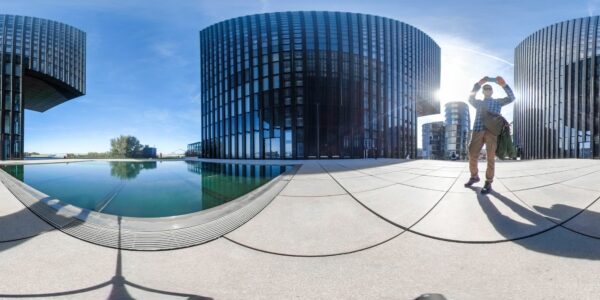Virtual tour 360: Transforming how we experience reality
Virtual tour 360: Transforming how we experience reality CONTACT US The Evolution of Virtual Reality Virtual reality (VR) has been a topic of fascination for decades, with early experiments and prototypes dating back to the 1960s. However, it’s only in recent years that the technology has truly come into its own, becoming more accessible, affordable, and user-friendly. The advent of high-resolution displays, powerful processing capabilities, and immersive tracking systems have all contributed to the rapid advancement of VR. As VR technology has evolved, it has paved the way for the development of virtual tour 360, which takes the immersive experience to new heights. By combining the power of VR with the flexibility of 360-degree photography and videography, virtual tour 360 offers a seamless blend of digital and physical worlds, allowing you to explore and interact with environments in a way that was previously unimaginable. Understanding Virtual Tour 360 At its core, a virtual tour 360 is a digital simulation of a real-world location, where you can navigate and explore the environment as if you were physically present. This is achieved through the use of 360-degree cameras, which capture a panoramic view of the surroundings, and specialized software that stitches these images together to create an immersive, interactive experience. Unlike traditional photographs or videos, virtual tour 360 allows you to look around freely, as if you were standing in the middle of the scene. You can pan, tilt, and zoom to focus on specific areas of interest, and even move from one location to another by clicking on designated hotspots or navigational elements. This level of interactivity and control over the viewing experience sets virtual tour 360 apart from other forms of digital media, making it a powerful tool for a wide range of applications, from real estate and tourism to education and e-commerce. Benefits of Virtual Tour 360 The benefits of virtual tour 360 are numerous and far-reaching, transforming the way we experience and interact with the world around us. Here are some of the key advantages: Accessibility Virtual tour 360 allows you to explore locations that may be physically inaccessible, whether due to geographical distance, limited mobility, or other constraints. This makes it possible to experience remote or exclusive destinations without the need for extensive travel. Convenience With virtual tour 360, you can explore a location at your own pace, without the hassle of scheduling tours or coordinating with others. You can revisit and examine areas of interest as many times as you like, all from the comfort of your own device. Cost-effectiveness Compared to traditional in-person visits or physical tours, virtual tour 360 can be a more cost-effective solution, eliminating the need for transportation, accommodation, and other expenses associated with travel. Personalization Virtual tour 360 allows for a highly personalized experience, as you can focus on the specific areas or features that are most relevant to your interests or needs, without being constrained by a pre-determined tour itinerary. Engagement The immersive nature of virtual tour 360 helps to create a more engaging and memorable experience, as you feel more connected to the environment and can actively explore it, rather than passively observing it. Versatility Virtual tour 360 can be applied to a wide range of industries and applications, from real estate and hospitality to education and e-commerce, making it a versatile tool for businesses and individuals alike. Transforming the Way We Experience Reality The advent of virtual tour 360 has ushered in a new era of how we perceive and interact with the world around us. By blending the digital and physical realms, this technology has the power to transport you to distant locations, providing an unparalleled level of immersion and engagement. Imagine being able to virtually tour a historic museum, exploring each exhibit in meticulous detail, without the constraints of physical distance or limited access. Or, consider the ability to virtually explore a luxury resort, scoping out the amenities and accommodations before booking your stay. These are just a few examples of how virtual tour 360 is transforming the way we experience reality. Industries Leveraging Virtual Tour 360 Virtual tour 360 has found widespread application across a diverse range of industries, each leveraging the technology to enhance their offerings and provide a more engaging and informative experience for their customers or clients. Real Estate Virtual tour 360 has become an invaluable tool for real estate professionals, allowing potential buyers to virtually explore properties without the need for in-person visits. This not only saves time and resources but also provides a more comprehensive understanding of the space, enabling buyers to make more informed decisions. Hospitality The hospitality industry has embraced virtual tour 360 as a way to showcase their properties, amenities, and services. From luxury hotels to vacation rentals, virtual tours allow potential guests to immerse themselves in the environment, helping to build anticipation and excitement for their stay. Education Educational institutions have leveraged virtual tour 360 to provide virtual campus tours, giving prospective students the opportunity to explore the facilities and get a feel for the campus environment before enrolling. This can be particularly useful for students who may be unable to visit in person. Retail and E-commerce Virtual tour 360 has also found its way into the retail and e-commerce sectors, allowing customers to virtually explore showrooms, stores, and product displays, enhancing the online shopping experience and reducing the need for physical visits. Tourism and Hospitality The tourism industry has embraced virtual tour 360 as a way to showcase destinations, landmarks, and attractions, allowing potential travelers to get a glimpse of what they can expect before booking their trips. This can be especially beneficial for remote or inaccessible locations. Museums and Cultural Institutions Virtual tour 360 has revolutionized the way museums and cultural institutions share their collections and exhibitions with the public. By creating immersive virtual tours, these organizations can reach a wider audience and provide a more engaging and accessible experience for visitors The Future of Virtual Tour 360 As technology continues to advance,…











